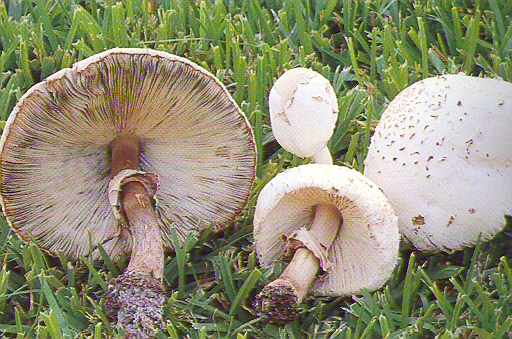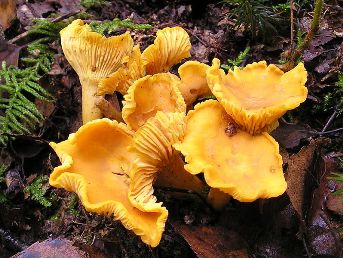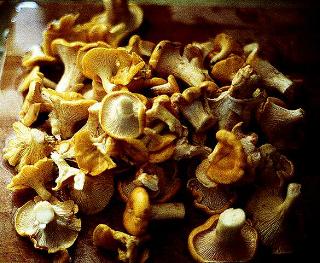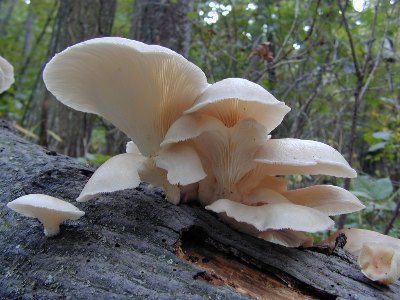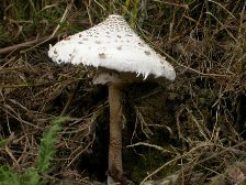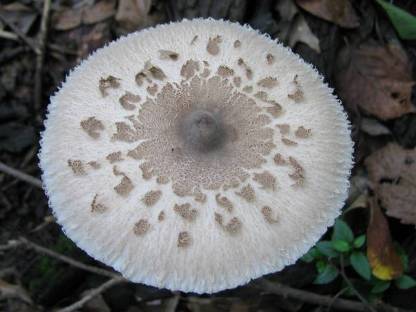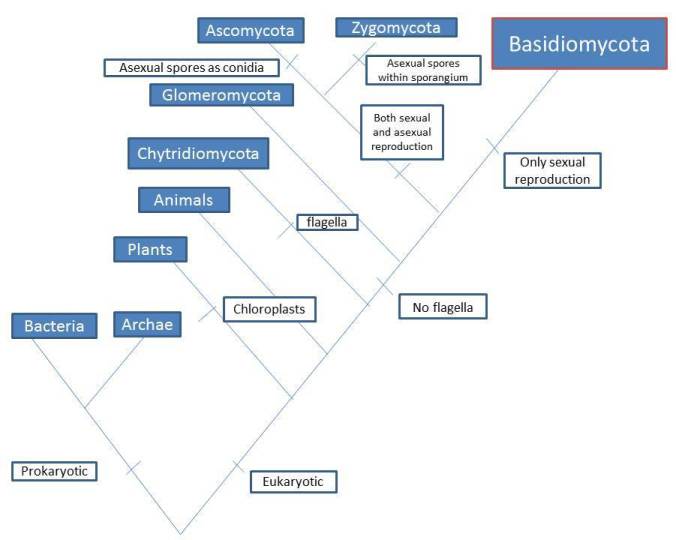Classy Classification
Classification Order:
Domain: Eukarya
Super-group: Opisthokonta
Kingdom: Fungi
Phylum: Basidiomycota
Class: Agaricomycetes
Order: Agaricales
Family: Agaricaceae
Genus: Chlorophyllum
Species: Chlorophyllum molybdites
Domain: Eukarya
Eukarya includes all plants, fungi, protists, and animals. False
parasol is put into this category because it has a true nucleus and has membrane bound organelles. It is
multi-cellular and reproduces.
Orchids
and
monarch butterflies
also belong to this domain.

 Taken
by Kenneth Dwain Harrelson
Taken
by Kenneth Dwain Harrelson
Super-group: Opisthokonta
Animals and fungi both fall under this super-group along with choanoflagellates which are the closest protists to the animals. The giraffe and the polar bear are animals that also fall into this grouping.
Kingdom: Fungi
All fungi are non-vascular which means they have no specialized
tissues. Fungi also reproduce by means of spores either asexually or sexually. This kingdom also has alternation of
generations which means it has different multi-cellular stages throughout its life. Another organism classified as a
fungi is the
black
bread mold.
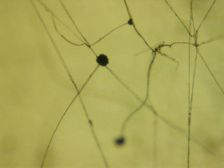

Photo by Juila
Photo by Tom Volk
Phylum: Basidiomycota
This phylum includes fungi that have their spores borne externally on club-like shaped structures called basidia. Another mushroom that is in this family is the yellow chanterelle.
Class: Agaricomycetes
This class is very diverse with over 16,000 species. Typically these organisms have mushrooms (fruiting bodies) used for reproduction. A lot of edible mushrooms fall within this class but Chlorophyllum molybdites is not one of those. Chlorophyllum molybdites fall into this class because they do produce a mushroom. Another organism that falls within this class is the Pearl Oyster Mushroom.
Order: Agaricales
This order typically contains mushrooms that have gills. These gills are important for reproduction of spores that will be dispersed into the environment. Chlorophyllum molybdites has these gills on the underside placing it in the order agaricales. The Magic Mushroom and Schizophyllum commune are great examples of this order.
Family: Agaricaceae
The mushroom Chlorophyllum molybdites belongs to the Agaricaceae family because of its blade-shaped gills on the underside of the cap. These fungi also are all saprobic meaning they get their food from dead or dying organic material. The Lepiota americana and the wolf-fart puffball are other species within this family.
Genus: Chlorophyllum
Those organisms belonging to this genius have thick-walled spores
and sturdy basidiocarps. They also have the ability to grow on lawns
and are in a wide distribution area. Originally color was the deciding factor of classification; however DNA analysis was
done and now 16 species join this genus, including
Macrolepiota procera: The Parasol Mushroom.
Species: Chlorophyllum molybdites
In Latin, chloro means green, phylum means
gills and molybdites means lead colored. This makes sense because
this mushroom typically has green spots in the mature stages. The
mushroom Chlorophyllum molybdites is also called Green-spored Lepiota or false
parasol.
Phylogeny:
This phylogenic tree is based on a cladistic approach or shared derived characteristics. Phylogenic trees can be determined by morphology (physical characteristics) and also by DNA sequencing. At the bottom the tree divides between prokaryotic and eukaryotic. Prokaryotic means "before nuclei" explaining that prokaryotic cells lack nuclei. Conversely, mushrooms have cells that contain nuclei so they fall into the domain Eukarya. Within Eukarya, it is believed that plants evolved from protists and that animals and fungi are more closely related. The Proceedings of the Nation Academy of Sciences of the United States of America examined different proteins such as actin, alpha-tubulin, beta-tubulin, and elongation factor 1 alpha. They concluded that animals and fungi have very similar proteins. Also the scientists stated that animals and fungi are a monophyletic group, meaning they share a common ancestor. They found no evidence to link animals and plants or fungi and plants as more closely related. This is interesting because for the longest time people assumed plants and fungi were more closely related. Before my biology classes, if I would have been asked if a daisy or a cheetah were more closely related to a mushroom I would have said a dasiy! Now I know better, I hope you do too. Anyway, there are 5 phylum of fungi mainly broken down by the way they reproduce. Basidiomycota is the monophyletic phylum that contains Chlorophyllum molybdites along with many others.
 Basidiomycota
is broken down into many different classes, orders, families,
genus', and species. Scientists estimated that there are roughly
30,000 different types of fungi species in this phylum. More
information on this research can be seen
here. Within the Basidiomycota phylum it is broken down based
off of rRNA sequencing. The tree to the right is showing a closer
look at how the genus Chlorophyllum breaks down into
species. This tree shows the relationships between the species based
on ITS-sequences. These species were found from all around the world
including, North America, Pacific Island, South America, Asia,
Australia, Africa, and Europe. Else C. Vellinga has a nice journal
that can be found
online that goes in more depth.
Basidiomycota
is broken down into many different classes, orders, families,
genus', and species. Scientists estimated that there are roughly
30,000 different types of fungi species in this phylum. More
information on this research can be seen
here. Within the Basidiomycota phylum it is broken down based
off of rRNA sequencing. The tree to the right is showing a closer
look at how the genus Chlorophyllum breaks down into
species. This tree shows the relationships between the species based
on ITS-sequences. These species were found from all around the world
including, North America, Pacific Island, South America, Asia,
Australia, Africa, and Europe. Else C. Vellinga has a nice journal
that can be found
online that goes in more depth.
From this tree we can determine that the closest relationship to Chlorophyllum molybdites is Chlorophyllum globosum. Chlorophyllum is also a monophyletic group with a common ancestor. The species within this genus are very widespread. Many of these species were not included in the genus because they were not green. After researching the DNA of these organisms they found more similarities and some species were moved into this group even though they lack the green coloring.
